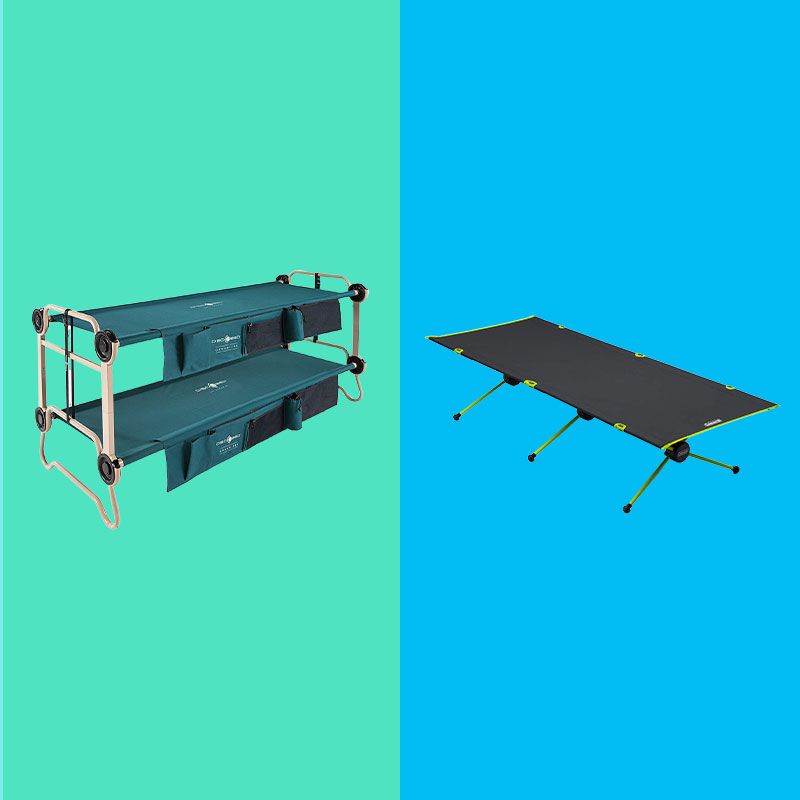Why Use a Camping Cot Instead of Sleeping on the Ground
Sleeping comfortably outdoors can greatly improve your camping experience. A cots for camping is a great choice to make this possible. Unlike sleeping directly on the ground, a cot adds a layer of support and convenience. It protects you from uneven surfaces, dampness, and pests. Let’s explore the key advantages and comparisons.
Benefits of Using a Camping Cot
- Elevated Sleeping Surface:Camping cots keep you off the ground. This helps protect against bugs, dirt, and moisture. You’ll enjoy a cleaner and more secure sleeping environment.
- Improved Comfort:Most cots offer built-in padding or a sturdy, even surface. This reduces pressure points and supports better spinal alignment compared to the ground.
- Temperature Regulation:Sleeping on a cot increases airflow beneath you. This keeps you cooler in summer and avoids the chill from the cold ground.
- Ease of Movement:Getting in and out of a cot is much easier than rising from the ground. Older adults or those with limited mobility benefit significantly.
- Durability and Support:Many camping cots are built to hold more weight than sleeping pads. They are also long-lasting due to strong materials.
Comparing Cots vs. Sleeping Pads
- Comfort Level:Cots tend to be more comfortable than sleeping pads. Pads may not cover ground irregularities as well.
- Portability:Sleeping pads are lightweight and compact, making them ideal for backpacking. Camping cots, while bulkier, provide more comfort for car camping.
- Setup Time:Sleeping pads are simple to unroll and use. Cots may require a few extra minutes to assemble but offer greater stability.
- Insulation:Pads often provide better insulation as they are directly placed on the ground. Cots may require an additional layer for colder weather.
Choosing between a camping cot and a sleeping pad depends on your camping style and needs. However, for superior comfort and off-ground sleeping, camping cots are a popular choice for many campers.
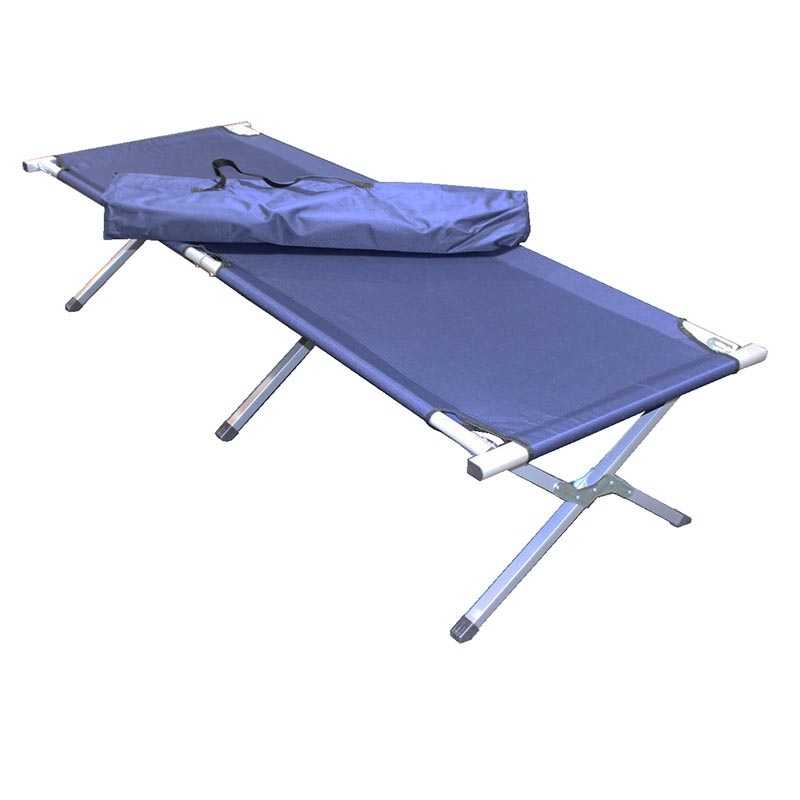
Types of Camping Cots
Camping cots come in different styles to suit various needs and camping activities. Each type offers unique features, ensuring you find the best fit for your adventure. Below are the main types of camping cots available.
Lightweight and Compact Cots for Backpacking
Lightweight cots are ideal for hikers and backpackers. These cots are designed to be compact and easy to carry. They typically weigh less than traditional camping cots and fold into small sizes. Their materials are durable yet lightweight, often featuring aluminum frames. Despite their minimalistic design, backpacking cots provide more comfort than sleeping on the ground. They are best for short trips where you need to minimize pack weight.
Heavy-Duty Cots for Car Camping
Heavy-duty camping cots are more robust and supportive. They are perfect for car camping or longer trips where weight is not an issue. These cots are built with sturdy frames, often made from steel or reinforced aluminum, making them capable of supporting more weight. They usually include added features such as thick padding or additional space for larger adults. Many heavy-duty options offer extra width and stability, enhancing comfort and durability.
Convertible Cots with Extra Features
Convertible cots are versatile and provide multiple functionalities. They can serve as both a cot and a lounge chair. Some models include built-in storage pockets, cup holders, or even canopies for sun protection. These cots are great for those who value comfort and ease during camping trips. Though these models might be heavier, the added features make them worth considering for car camping or extended stays.
When choosing the best camping cot, think about your specific needs and camping style. Whether it’s a lightweight cot for hiking or a heavy-duty one for family trips, you’ll find an option that fits.
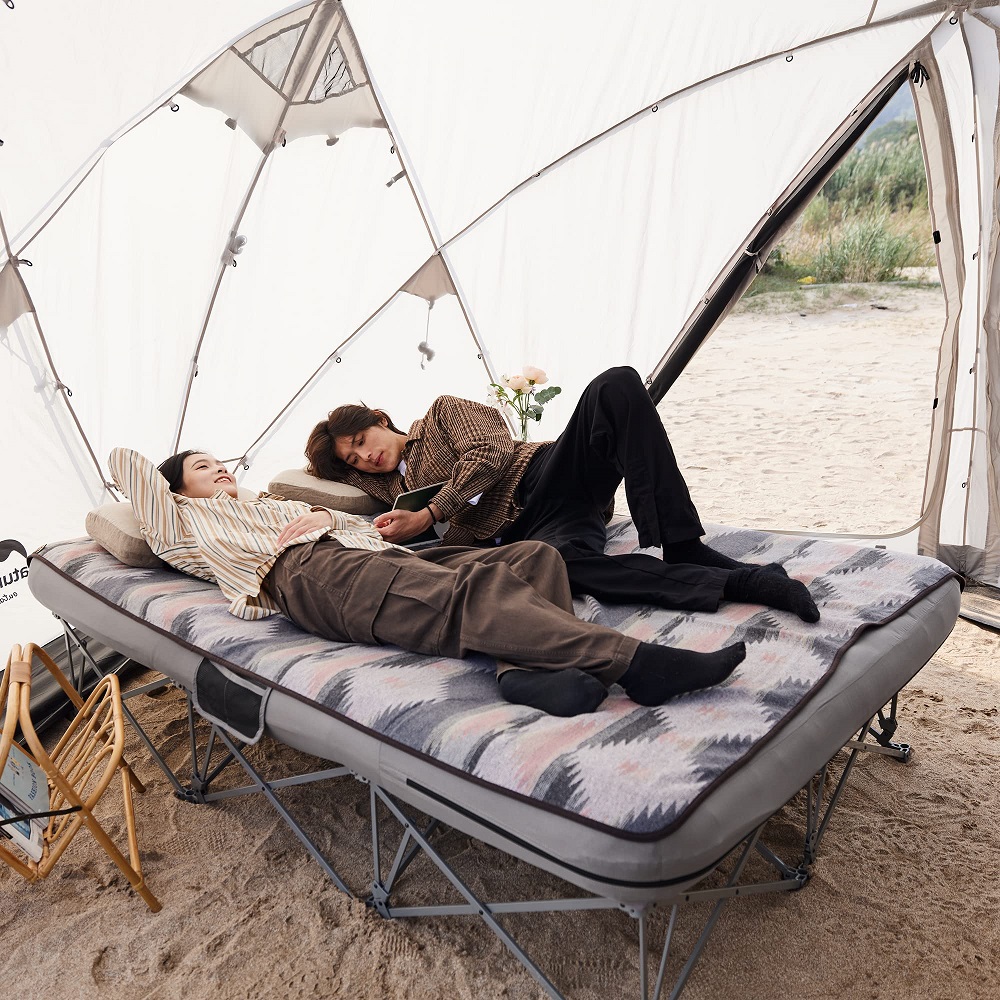
Key Features to Look for in a Camping Cot
Choosing the right camping cot involves understanding key features that suit your needs. Below, we discuss essential aspects to consider when selecting cots for camping.
Frame Materials and Durability
The frame of a camping cot determines its strength and longevity. Look for materials like steel or aluminum frames for sturdy support. Aluminum frames are lighter and still durable, making them ideal for portability. Steel frames offer stronger support but may be heavier to carry. Always check the weight capacity and stability of the cot based on your usage. Frames with reinforced joints last longer and handle frequent use better.
Comfort and Padding Options
Comfort plays a critical role in enjoying camping. Many cots feature padded surfaces or built-in mattresses for added relaxation. Look for cots with solid fabric surfaces like polyester or nylon for consistent support. Ensure the cot reduces pressure points and provides proper spinal alignment. Extra padding or cushioned layers enhance your sleep quality. You can also add a sleeping pad or mattress for even more comfort, especially during extended trips.
Portability and Setup Process
Portability is important, especially if you’re hiking or traveling light. Lightweight cots are easier to pack and carry. Check if the cot folds compactly for convenient storage and transport. Some models come with carrying bags for added ease. Consider the setup process, as some cots are quicker to assemble than others. Cots with simple mechanisms save time and effort during hectic trips. Always test the assembly before purchasing to ensure it fits your needs.
Understanding these features ensures that you select the right cot for camping comfort and utility.
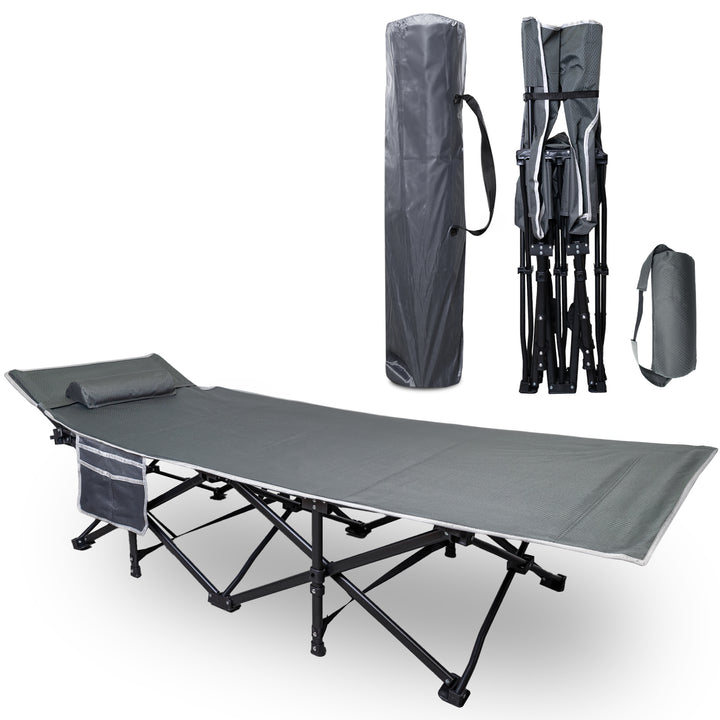
Top Camping Cots for Different Needs
Finding the right cot depends on your specific camping requirements. Whether you’re a solo backpacker, camping with family, or preparing for cold-weather trips, there’s a cot designed for you. Below are the best camping cots for various needs.
Best Cots for Solo Backpackers
For solo backpackers, a lightweight and compact cot is essential. These cots are made with portability in mind. They often weigh under five pounds and fold into small sizes for easy storage. Materials like aluminum frames and durable fabric ensure both lightness and strength. Despite being minimalistic, these cots provide enough comfort for restful sleep. Brands such as Helinox or Therm-a-Rest offer popular options catering to backpackers. Prioritize compactness and weight when selecting your cot for hiking adventures.
Family-Friendly Cots and Sleeping Solutions
Family camping trips require cots that balance comfort and durability. Look for heavy-duty cots with extra width or multiple sleeping options. Bunk-style cots are great for saving space in tents. Some cots also come with padding or built-in mattresses. These features ensure a comfortable sleeping arrangement for kids and adults alike. Additionally, cots with features like storage pockets or organizers can add convenience. Coleman and Disc-O-Bed are known for their versatile and family-friendly designs.
Cots for Cold-Weather Camping
Cold-weather campers need special cots to stay warm and comfortable. Opt for models with high clearance from the ground to minimize cold exposure. Pair your cot with an insulated sleeping pad or mattress for added warmth. Cots with strong, durable frames also offer better support in rough conditions. Pick materials with excellent weight capacity and stability, such as reinforced steel. Consider brands that prioritize insulation compatibility, like Teton Sports. These cots keep you cozy even in freezing temperatures.
Selecting cots for camping is all about understanding your needs. Whether you need portability, family comfort, or cold-weather support, there’s a perfect option waiting for you.
Caring for and Maintaining Your Camping Cot
Proper care ensures your camping cot lasts longer and remains reliable. Regular maintenance keeps it clean and in good condition. Below, we’ll explore how to clean, store, and address common issues with your cot.
Cleaning and Storing Your Cot
- Cleaning the Cot:
- Use a soft brush to remove dirt and debris after each trip.
- Wipe the fabric with a damp cloth and mild soap to clean stains.
- Allow the cot to dry completely before packing to prevent mold.
- Maintaining the Frame:
- Inspect joints and frames for dust or rust. Use a dry cloth to clean them.
- Apply a tiny amount of lubricant to moving parts for smooth operation.
- Tighten loose screws or bolts to maintain stability.
- Storing the Cot:
- Fold the cot as per instructions to avoid damage.
- Place it in a storage bag to protect from dust or pests.
- Store in a dry place away from moisture to prevent rust or fabric deterioration.
Common Issues and How to Fix Them
- Loose or Damaged Fabric:
- Check for tears and repair them using patch kits designed for camping gear.
- If the fabric sags, adjust tension straps or bindings if available.
- Rusty Frame:
- Sand rusted areas gently and wipe clean.
- Apply anti-rust paint or rust-preventive sprays for long-term protection.
- Stuck or Stiff Joints:
- Use a spray lubricant to loosen stuck joints.
- Avoid forcing parts as this may break them; instead, check assembly instructions.
- Bent or Broken Parts:
- Replace damaged parts like legs or hinges if replacements are available.
- If beyond repair, consult the manufacturer for spare components.
By maintaining and caring for your cot, you ensure its comfort and durability. A well-kept cot makes every camping trip more enjoyable.
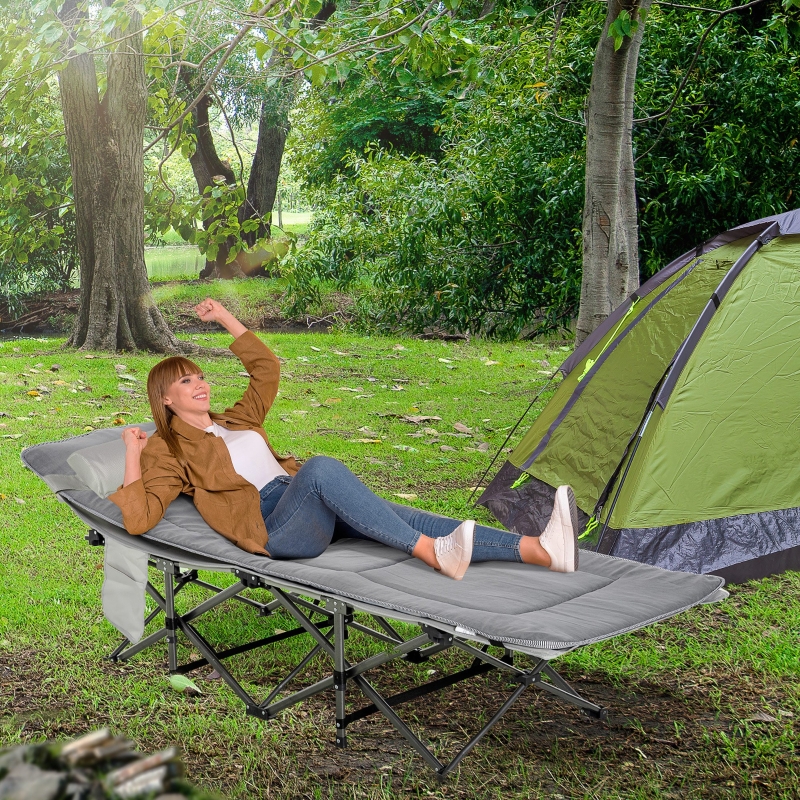
FAQs About Camping Cots
Are Camping Cots Suitable for All Terrains?
Camping cots work well on most terrains. However, they require relatively flat and stable surfaces. Uneven ground can affect stability and comfort. For rocky or soft terrain, bring a groundsheet for added support. Avoid placing cots on steep inclines or loose sand. Always check the area before setting up your cot to ensure safety and balance.
How Much Weight Can a Camping Cot Hold?
The weight capacity of camping cots varies by model and design. Most cots support between 200 to 600 pounds. Lightweight backpacking cots typically handle lower weight limits. Heavy-duty cots offer higher capacity for larger individuals or multiple users. Always check the manufacturer’s specifications to ensure the cot meets your needs.
Do Camping Cots Require Assembly?
Most camping cots require simple assembly. Some have foldable designs for quick setup. Lightweight models often snap into place without tools. Heavier or feature-rich cots may take a few extra minutes to assemble. Always follow the instructions to ensure proper stability. Practice assembling at home for faster setup during your camping trip.
Tips for Enhancing Comfort While Using a Camping Cot
Cots for camping offer excellent support and functionality, but you can enhance comfort significantly. By using a few adjustments and accessories, you can make your sleep more restful and enjoyable. Below are some essential tips to maximize comfort while using cots for camping.
Adding a Mattress or Sleeping Pad
- Increase Cushioning: Place a foam mattress or inflatable sleeping pad on your cot.
- This adds extra padding and reduces pressure points, providing better sleep quality.
- Choose the Right Pad Thickness: Opt for pads with at least 1-2 inches of thickness for added comfort.
- Improve Stability: Select a sleeping pad with non-slip backing to prevent sliding during sleep.
- Consider Insulated Pads: These are particularly useful for cold trips, as they add warmth to your sleeping area.
Adding a mattress or pad elevates your cot experience during long or overnight trips.
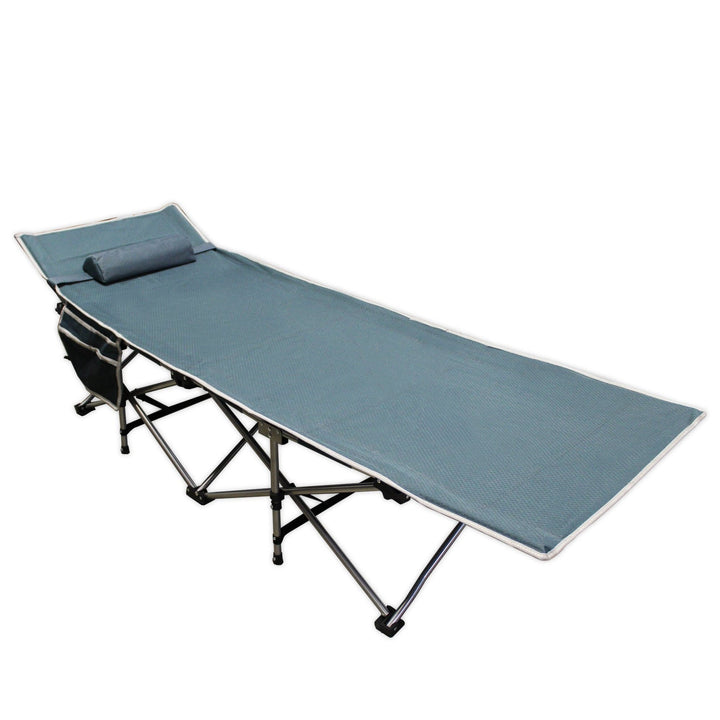
Choosing the Right Sleeping Bag for Extra Warmth
- Match Bag Size to Cot: Ensure your sleeping bag fits the dimensions of your camping cot.
- Prioritize Material: Use sleeping bags with soft linings for extra coziness and insulation.
- Select Proper Temperature Ratings: Choose bags rated for the climate you’ll be camping in.
- Milder temperatures require lighter bags.
- Cold-weather trips benefit from down-filled or thermally insulated bags.
- Layering Options: If unsure, pair lightweight sleeping bags with blankets for versatility.
The right sleeping bag complements your cot for a warmer, more comfortable outdoor rest.
Positioning Your Cot for Better Rest
- Set Up on Even Ground: Ensure the cot is on a flat and stable surface to avoid tipping.
- Pick a Sheltered Spot: Choose shaded or sheltered areas to avoid exposure to sunlight and wind.
- Adjust for Elevation: Position the cot with your head slightly elevated using a small pillow or adjustable legs.
- Keep Essentials Near: Place items like a water bottle or torch within easy reach.
Strategic positioning of your camping cot ensures a restful and uninterrupted sleep experience.
By implementing these tips, you enhance the comfort and usability of your cots for camping. Thoughtful preparation transforms your outdoor sleeping experience into one that rivals indoor comfort.
